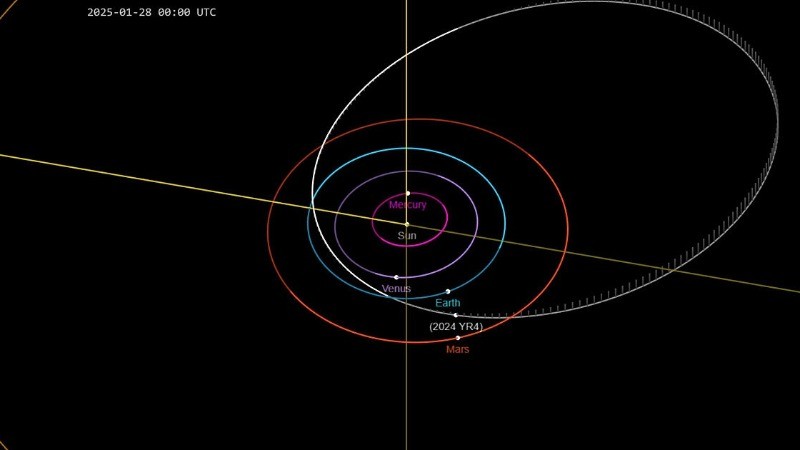
Asteroid City-Killer 2024 YR4: Will It Hit Earth in 2032? National Aeronautics and Space Administration (NASA) has released Impact Zone List - Scientists are keeping a close watch on asteroid 2024 YR4, which has a small chance of hitting Earth on December 22, 2032. The risk of impact has slightly increased to 2.6% from 2.2% in recent days, but experts say it is still more likely to pass by safely.
How Big Is the Asteroid?
According to NASA and the European Space Agency (ESA), the asteroid is between 40 to 100 meters wide. While it is unlikely to hit Earth, scientists are continuing to monitor it closely because there is still some uncertainty about its exact path.
NASA says that as more data is collected, the chances of impact may either increase or be ruled out completely—something that has happened with similar asteroids before. In March and May, the James Webb Space Telescope will study its size, composition, and trajectory more closely. The International Asteroid Warning Network will also track it until April, before it becomes too faint to observe until June 2028.
Where Could It Hit?
Scientists have identified a possible "risk corridor" where the asteroid could strike if it does hit Earth. This region includes:
Should We Be Worried?
Because of its size, asteroid 2024 YR4 is known as a "city killer," meaning it could cause serious damage if it impacts a populated area. However, space agencies stress that there is no reason to panic. These probabilities often increase at first but then drop significantly as more accurate calculations are made.
A similar situation happened with the Apophis asteroid, which was once thought to be a threat in 2029 and 2036 but was later ruled out as a danger. Scientists expect a clearer picture of 2024 YR4’s path in the coming years.
NASA's DART mission in 2022 showed that a spacecraft can change an asteroid's path. Scientists have also come up with other ideas. One method is using lasers to heat and vaporize part of the asteroid, pushing it in a new direction. Another idea is using a spacecraft's gravity to slowly pull the asteroid off course. As a last resort, some experts even suggest using nuclear explosions to move it away.